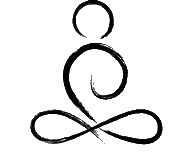How do we ‘Let Go’?
I woke up the other morning and couldn’t move my right arm without wrenching pain. What is this?? I wasn’t aware of hitting it or injuring it, but something happened in the night, and now I couldn’t use my dominant arm. The day ahead included flying, then driving, to a mountain village in Colorado for a family celebration for several days. The celebration was beautiful, as were the mountains, but my arm got steadily worse. When we returned from the mountain town to a bigger city, a visit to urgent care suggested I had damage in the nerve plexus that controlled my arm. They gave me a sling and some medication and sent me on my way.
What was interesting to me about all this was the experience of life without the use of my right arm; it had to be completely immobile or I’d have searing pain - so I kept it immobilized. This meant I couldn’t take the cap off the toothpaste, get dressed, write or type, drive, wash my hair, tie my shoes, or eat food without taking three times as long (do anything without it taking three times as long). So, everything had to slow down. I had to rely on other people to do nearly everything I wanted to do. I didn’t know what was truly going on medically, nor how long it would last. And I was in constant pain.
(I am speaking in the past tense here, because, after a week, it is beginning to feel better, although I still need to see another doctor, and in the meantime, I hope it doesn’t revert once the steroids leave my system!)
This was interesting because, in a way, it brought me into another way of being.
This ‘other way of being’ was primarily slowing way down. Every action became a meditation, just a being-with the moment-by-moment experience. There was little else I could do, so I sat with each moment, each sensation, each emotion, each thought. I had to let go of my desire to drive to the store, go to the gym, sleep on my usual side, cook a meal, write a note, pay some bills, or clip my fingernails.
Over these same days, I listened to a talk given by one of my favorite teachers, Joseph Goldstein. He was asked the question: ‘We’re always talking about letting go, and that this is a helpful thing to do. But how do we actually do that in real life?’
I have had the same question, so I was eager to hear his wisdom.
Joseph did not disappoint. He suggested that the answer was to simply change one word: the way to let go is to let be. If we are able to accept the truth of how things are – let something be what it is without arguing with it, resisting it, denying it, or clinging onto it, then letting go happens almost automatically, organically. Letting go implies effort, activity, and even manipulation. Letting be is easeful, like opening a clenched fist, or simply breathing. Letting be is a mindfulness or awareness practice: we see the changing nature of our experience without having to do anything; it will change on its own, and in that comes the letting go. We are in the flow of changing experience without any efforting.
Easier said than done? Maybe. But so worth a try. I have found it truly helpful in being with my current physical restriction. There is that place between resisting and grousing about what is, on one hand, and falling into hopelessness or misery, on the other hand. That middle place is the land of letting be. Here, we are fully aware of the situation, not engaging in denial or resistance, and still able to co-exist with it. At least some of the time!
What is your experience with letting go and letting be? Do you feel a distinction between the two?
You’re welcome (encouraged!) to leave comments or your own reflections below … and please sign up for my newsletter at the top of this page if you haven’t already to receive my updates and essays.
